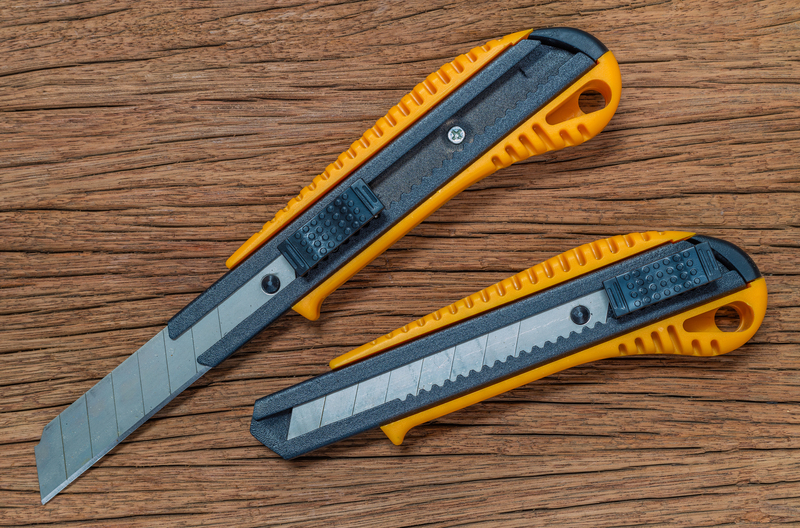Solo Success: Lift Heavy Objects with Ease
Posted on 02/06/2025
Solo Success: Lift Heavy Objects with Ease
Ever found yourself in a situation where you needed to move a heavy piece of furniture, a bulky box, or an awkward appliance, but there was no one around to help? Solo lifting can be daunting, and perhaps even dangerous if done incorrectly. However, armed with the right knowledge, strategies, and simple tools, lifting heavy objects alone can be both safe and surprisingly simple. In this comprehensive guide, we'll teach you effective methods for solo success--from preparation to practical techniques--so you can lift heavy loads with ease.

Understanding the Risks of Lifting Heavy Objects Alone
Lifting heavy objects is a daily necessity for many people. Whether you are rearranging your furniture, moving to a new house, or working in labor-intensive settings, the need to handle bulky items solo is common. Unfortunately, improper lifting can result in:
- Back injuries
- Muscle strains
- Joint pain
- Slips and falls
- Long-term physical issues
To achieve solo success and lift heavy objects effectively, it's essential to understand ergonomics, best practices, and safety precautions. Let's dive deeper into the practical steps to ease your solo lifting journey.
Key Principles for Safe Lifting
1. Assess the Situation
- Analyze the Object: Before attempting to lift anything heavy alone, inspect its size, shape, and weight. If the item feels unmanageable, consider disassembling it or enlisting help.
- Chart Your Path: Ensure the path to your destination is clear of obstacles, slippery spots, or tripping hazards that could impede your movement.
2. Plan Ahead and Prepare
- Test the Load: Gently nudge or lift the object to gauge its heaviness. This step lets you mentally and physically prepare for the real task.
- Wear Proper Attire: Opt for closed-toe shoes with good grip and comfortable, non-restrictive clothing. Avoid sandals, slippery soles, or loose garments that might snag.
- Warm Up: Perform some dynamic stretching to activate your muscles. Focus on your back, legs, and arms for optimal movement and injury prevention.
3. Utilize Proper Lifting Technique
Form is everything when it comes to lifting heavy objects solo. Following these guidelines will minimize your risk of injury:
- Stand Close: Place your feet shoulder-width apart, standing close to the object to avoid overreaching.
- Bend Your Knees: Squat down by bending at the knees and hips, not at the waist. This engages your leg muscles--your strongest allies!
- Keep Your Back Straight: Maintain a neutral spine throughout the lift. Avoid arching or rounding your back.
- Grip Firmly: Secure a strong grip before lifting. Use your entire hand, not just your fingers.
- Lift with Your Legs: Initiate the movement by pushing through your heels and extending your legs, not your back.
- Hold the Object Close: Keep the load as close to your body as possible to reduce strain and maintain balance.
- Move Slowly: Avoid sudden jerking movements; steady, controlled actions are safer.
- Maintain Vision: Look ahead (not down) to keep your spine aligned and anticipate your next step.
Proven Methods for Solo Lifting Success
Are you ready for the practical secrets of lifting large loads by yourself? Here are some expert-approved techniques:
1. Slide Instead of Lift
- Use moving blankets, towels, or cardboard under heavy items to decrease friction and allow them to glide smoothly across surfaces, minimizing effort and back strain.
- Furniture sliders are inexpensive and effective for gliding big items, especially on carpet or wood floors.
2. Leverage Tools and Equipment
- Dollies and Hand Trucks: Perfect for heavy boxes and appliances, these wheeled devices transform solo lifting into easy maneuvering.
- Moving Straps: Harness-style lifting straps redistribute the weight to your legs and shoulders, letting you lift with less strain and more stability.
- Ramps: A ramp makes elevating a heavy item onto a truck or up a step much less taxing on your body.
3. Break it Down
- Disassemble furniture, remove drawers, or take out removable shelving to lessen the load.
- Divide contents into smaller, more manageable boxes whenever possible.
4. Use Leverage and Momentum
- Pivot Techniques: Stand the item upright and gently pivot it from one corner rather than lifting the full weight at once.
- Rolling: If the item is cylindrical or can support its own weight, gently roll it rather than carry it.
Ergonomics Matter: Protect Your Body
Solo lifting is about much more than brute strength. Smart ergonomics ensure both immediate and long-term success. Below are critical tips to safeguard your muscles and joints.
1. Maintain Good Posture
- Keep your ears, shoulders, and hips aligned during the movement.
- Engage your core muscles--this stabilizes your trunk and shields your spine.
2. Know Your Limits
- Don't Attempt What Feels Unsafe: No object is worth risking your health. Assess objectively if you can safely manage the load solo.
- If in doubt, break the item down further or wait for help.
3. Rest and Recover
- Take Breaks: When moving multiple items, rest periodically to avoid overload and fatigue.
- Stretch After Lifting: Gentle stretching of your back, legs, and arms can expedite recovery and decrease soreness.
Techniques for Specific Heavy Objects
Here's how to move different types of heavy items alone with less risk:
1. Appliances (Refrigerators, Washers)
- Always secure doors and removable parts with tape or rope.
- Use a dolly and tilt the appliance gently backward, balancing the weight on the wheels as you move.
- Secure with straps when moving down steps or ramps to prevent slipping.
2. Furniture (Couches, Dressers)
- Remove cushions, drawers, or legs to lighten the load.
- "Walk" one end forward, then lift and pivot the other.
- Use furniture sliders or a moving blanket for smooth gliding.
3. Boxes and Containers
- Keep boxes under 50 lbs (23 kg) when possible for manageable lifting.
- Stack boxes with heavier items on the bottom for easier grab-and-go transport.
Common Mistakes to Avoid
- Lifting with your back: Always use your legs, not your back, as the primary lifting muscle group.
- Twisting while lifting: Turn your feet, not your torso, to change direction.
- Overreaching or stretching: Move closer to the object and center your grip.
- Rushing: Haste increases the risk of accidents and injury. Move slowly and steadily.
Training Your Body for Solo Lifting Success
Achieving solo success doesn't just rely on knowledge--it also depends on your physical readiness. Simple strength and flexibility exercises can make a world of difference when it comes to lifting heavy loads with ease.
1. Strengthen Your Core
- Planks, bridges, and Pilates moves improve spinal stability.
- Train abdominal and lower back muscles for better posture and support.
2. Build Leg Power
- Squats, lunges, and step-ups prepare your legs, the powerhouses for safe lifting.
- Strong legs take the pressure off your back and shoulders.
3. Enhance Grip Strength
- Dead hangs, farmer's walks, and using grip trainers help you grasp and stabilize heavy items more securely.
4. Increase Flexibility
- Dynamic warm-up routines and regular stretching keep muscles and joints limber, further reducing injury risk.
Top Solo Lifting Tools You Can Buy
A small investment in proper equipment can pay major dividends in both ease and safety. Here are essential tools for lifting and moving heavy objects solo:
- Furniture sliders: For gliding large objects across floors.
- Hand truck/dolly: Ideal for appliances and heavy boxes.
- Lifting straps: Distribute weight, reducing fatigue and risk of injury.
- Moving blanket: Acts as a buffer and helps convert lift-and-carry jobs to easier sliding ones.
- Work gloves: Protect your hands and improve your grip.
- Forearm forklifts: Simple straps that give you extra lifting leverage.

Frequently Asked Questions About Lifting Heavy Objects Alone
Is there a maximum weight I should lift alone?
The general recommendation for maximum safe lifting by one person is around 50 lbs (23 kg), but this varies based on your fitness, technique, and the item's size and shape. Avoid solo lifting if the object exceeds your capability or is awkwardly large.
What should I do if I feel pain while lifting?
Stop immediately! Pain is a signal of potential injury. Set the item down carefully, check your technique, and if pain persists, consult a medical professional.
How can I move heavy objects upstairs or downstairs by myself?
Use ramps, dollies with stair-climbing wheels, or break down the item. Move slowly, keeping the object below waist level and leaning into your strongest muscles. Avoid lifting on stairs if there is any doubt about safety.
Conclusion: Your Path to Solo Success
With the right techniques, tools, and physical prep, lifting heavy objects alone transforms from a risky challenge to a manageable achievement. Prioritize safety, plan each move, and never hesitate to ask for assistance if an item exceeds your personal limit. Embrace these strategies and you'll soon find that with practice and preparation, solo lifting success is within your reach!
Remember: A moment spent planning and utilizing correct lifting methods can save you from weeks (or even months) of injury and recovery!
Ready to tackle your next big move? With this comprehensive guide, you're now equipped with everything you need to lift heavy objects with ease and confidence--no help required!







